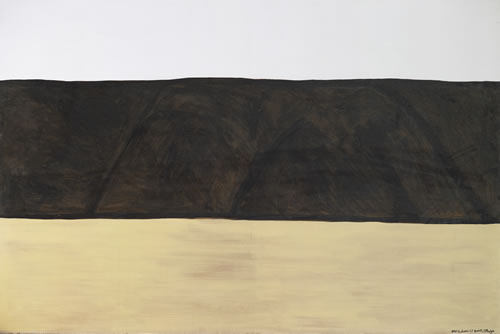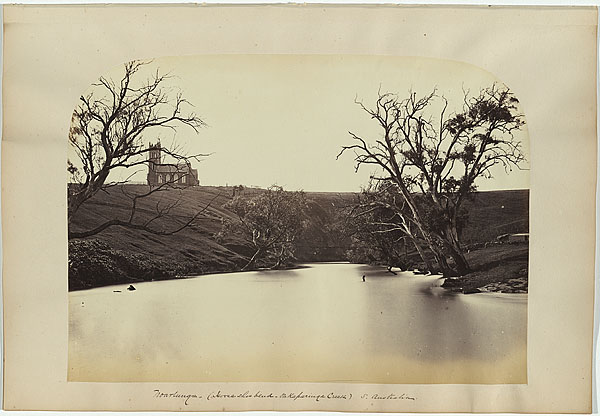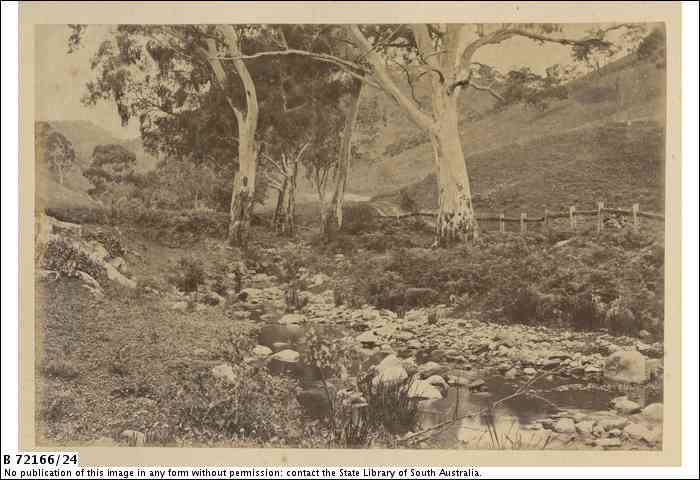January 30, 2012
climate change denialism: do nothing
More climate change denialism in the Wall Street Journal There's no need to panic about global warming because there no compelling scientific argument for drastic action to 'decarbonize' the world's economy. It resurfaced in the The Australian. The argument is critiqued here.
The bit I liked the best was the policy idea: that we do nothing for the next several decades:
A recent study of a wide variety of policy options by Yale economist William Nordhaus showed that nearly the highest benefit-to-cost ratio is achieved for a policy that allows 50 more years of economic growth unimpeded by greenhouse gas controls. This would be especially beneficial to the less-developed parts of the world that would like to share some of the same advantages of material well-being, health and life expectancy that the fully developed parts of the world enjoy now. Many other policy responses would have a negative return on investment. And it is likely that more CO2 and the modest warming that may come with it will be an overall benefit to the planet.
That's the position of Rupert Murdoch's media--- take no serious action to reduce greenhouse gas emissions including shifting to cleaner and renewable energy. This position ignores that the totality of impacts of global warming — warming, acidification, extreme weather, Dust-Bowlification — is showing evidence of harm to the biosphere, biodiversity, and agriculture in particular. These are what economists call negative externalities of economic growth.
In this 2007 study entitled The Challenge of Global Warming: Economic Models and Environmental Policy Nordhaus concludes thus:
The summary message of this study is that climate change is a complex phenomenon, subject to great uncertainty, with changes in our knowledge occurring virtually daily. Climate change is unlikely to be catastrophic in the near term, but it has the potential for serious damages in the long run. There are big economic stakes in designing efficient approaches. The total discounted economic damages with no abatement are in the order of $23 trillion..... In the author’s view, the best approach is one that gradually introduces restraints on carbon emissions. One particularly efficient approach is internationally harmonized carbon taxes – ones that quickly become global and universal in scope and harmonized in effect.
So the Wall Street Journal is misrepresenting Nordhaus analysis of the tradeoff in energy and environmental policy, his position with respect to negative externalities and his advocacy of externality taxes as the best fiscal instrument rather than the use of subsidies.
As he argues here the need for taxes on energy externalities such as carbon emissions is central to our ability to reduce the harmful side effects of economic growth. Environmental taxes are efficient taxes because they tax “bads” rather than “goods.” Environmental taxes have the unique feature of raising revenues, increasing economic efficiency, and improving the public health.
January 23, 2012
'War on the Internet' event: - Suelette Dreyfus
The War on the Internet event, which was co-hosted by EFA and the Australian Greens, was held at Trades Hall in Melbourne on 21st January 2012. It featured:
Jacob Applebaum - leading computer security researcher and hacker
Bernard Keane - 'Crikey' journalist and author
Scott Ludlam - Senator for Western Australia and Greens spokesperson for Broadband, Communications and Digital Economy
Suelette Dreyfus - author and researcher on whistleblowing
This is a video of the talk by Suelette Dreyfus:
War on the Internet event #2 - Suelette Dreyfus from Electronic Frontiers Australia on Vimeo.
Her text Underground: Tales of Hacking, Madness and Obsession on the Electronic Frontier is a 1997 book that is researched by Julian Assange. It describes the exploits of a group of Australian, American, and British black hat hackers during the late 1980s and early 1990s, among them Assange himself. The book is freely available in electronic form.
The talk by Bernard Keane is here
January 22, 2012
Captain Beefheart at Cannes
Captain Beefheart & Magic Band perform 'Electricity' on the beach at Cannes in 1968:
'Electricity' is from the Safe as Milk album (1967). I've just started listening to Strictly Personal (1968). I'm finding it fascinating, in spite of all the layering of the extraneous sound effects like heartbeats and excessive use of psychedelic-era clichés like out-of-phase stereo panning and flanging) by Bob Krasnow, the producer.
Take a listen to 'Beatle Bones 'N' Smokin' Stones' with its parody of the Beatles 'Strawberry Fields Forever':
January 21, 2012
design inspiration
In Recharge Your Design Batteries John O'Reilly & Tony Linkson is designed to inspire you to look in new directions for radical solutions and invites you to hone entirely new skill sets.
Tactics include: writing must-have lists and storytelling scenarios; compiling visual scrapbooks, drawing in sketchbooks and journaling daily; establishing a blog with a regular creative challenge; launching your own cute product line; collecting color and texture swatches and constructing atmospheric mood boards; experimenting with still and video cameras and recording experiences and environments; sourcing ephemera and found objects from flea-markets to build and display inspirational collections; volunteering and working pro-bono; and taking day trips and longer excursions to discover archival resources
I do some of this already---eg., drawing in sketchbooks (ie., using a digital camera), journaling daily and writing a blog--around the photographs that I take in Victor Harbor.
January 19, 2012
Grateful Dead: Closing of Winterland
The Closing of Winterland is a 4 CD live album of the Grateful Dead's New Year's Eve show 1978. The concert was also released as a 2 disc DVD. The title derives from the fact that it was the last concert in San Francisco's Winterland Arena, which was shut down shortly thereafter in 1979.
It marks the marks the closing of a historic San Francisco music landmark. The Dead celebrated the Closing as an approximately five hour long party (complete with breakfast with the audience at dawn) and invited some guests
The set list itself was intriguing from the unusual opening salvo of Sugar Magnolia, Scarlet Begonias, and Fire on the Mountain to the third set’s stratospheric cruise through such notable fan favorites as Dark Star, The Other One, Wharf Rat, St. Stephen, and Good Lovin’.
The ensemble’s original 24-track analog master tapes from this event have been mastered digitally and synched with the original video footage shot for a public television broadcast in order to form the basis for The Closing of Winterland DVD.
This is set 3. It's better music than Set 1which tended to go downhill after the opening sequence.
This DVD is the only multi-track video project that exists from the ’70s and the two-DVD collection is an audio-visual time capsule of musical history.
January 16, 2012
cracking down on online copyright infringement
According to Nate Cochrane in The National Times in 2005, and after two years of legal wrangling, Australian Federal Court judge Brian Tamberlin, since retired, handed down a guilty verdict against Stephen Cooper and his ISP Comcen for Cooper's website MP3s4Free.com linking to allegedly infringing music. Tamberlin ruled that merely linking to potentially infringing content was itself illegal, and this rule has informed the decisions of media companies generally when reporting such issues ever since.
The US US House Bill 3261 Stop Online Piracy Bill, or SOPA goes further, as it cracks down on internet piracy and counterfeit goods with what critics say are draconian penalties. It proposes that search engines blackball sites alleged to have infringed on copyright and for internet service providers to bar users from getting access to them. It does this in a way that undercuts a new security standard that thwarts malicious redirects of web traffic, which often go to criminal and phishing sites.
The Bill asserts that this kind of crackdown to combat the theft of U.S. property, will prosperity, creativity, entrepreneurship, and innovation. Silicon Valley disagrees. The proposed congressional legislation they argue poses a stark, existential threat to the core architecture of the free and open Internet.
Though rampant abuse of intellectual property is indeed flourishing online Hollywood, the music industry and the publishing industry reckon that that their old business models will be rescued by tighter enforcement that ensure the centralization of authority and control and disenfranchisement of consumers. They've gone too far.
In The Atlantic David Sohn and Andrew McDiarmid argue that SOPA's breathtaking scope means that:
To protect themselves, platforms of all kinds would be pressured to actively monitor and police user behavior. This new de facto duty to track and control user behavior would significantly chill innovation in social media and undermine social websites' central role in fostering free expression. It would also set the dangerous international precedent that governments seeking to block online content -- be it infringement, or hate speech, or political dissent -- should look to online communications platforms as points of control.
Under SOPA's private notice-and-cutoff system, any online content or communications platform could lose its financial support at the whim of the most litigious rightsholder. Every user-generated content platform, social-media website, or cloud-based storage service would be at constant risk.
January 14, 2012
Colin McCahon
I've always been impressed by Colin Cahon's North Otago landscapes.
 Colin McCahon North Otago landscape no. 2, 1967.
Colin McCahon North Otago landscape no. 2, 1967.
The distinguishing feature of this series is their generalised nature. Detail has been all but eliminated from this painting and the landscape reduced to horizontal bands (or fields) of colour. These are designed to evoke an emotional and contemplative response. The specifics of locality are less important than the symbolic content embodied by the landscape.
n his introduction to the catalogue for the exhibition of these works at Auckland’s Barry Lett Gallery in October 1967, McCahon wrote:
These landscapes are based on places I have seen and known ... Unlike many other parts of the country the landforms of North Otago suggest both age and permanence. They have been formed, not by violence, but by the slow processes of normal erosion on more gentle landscape faulting than has happened elsewhere. In painting this landscape I am not trying to show any simple likeness to a specific place. These paintings are most certainly about my long love affair with North Otago as a unique and lonely place, they are also about where I am now ... These paintings stand now as a part of a search begun in Dunedin, continued in Oamaru and developed by the processes of normal erosion since then. The real subject is buried in the works themselves and needs no intellectual striving to be revealed – perhaps they are just North Otago landscapes.
McCahon's interest in landscape as a symbol of place is not so much a portrait of a place as such but is a memory of a time and an experience of a particular place'. in the paintings the trees and farms have been swept aside to uncover the structure of the land.
January 12, 2012
South Australian colonial photographers: Townsend Duryea
This is a favourite image of mine from the remaining body of work that have of Townsend Duryea. Remaining because his studio was destroyed by fire in 1875 along with Duryea’s entire collection of 50,000 glass plate negative. One of the best records of early colonial Adelaide was lost.
 Townsend Duryea, Hose Shoe Bend, Onkaparinga Creek, Norlunga, circa 1865-7, albumen silver print
Townsend Duryea, Hose Shoe Bend, Onkaparinga Creek, Norlunga, circa 1865-7, albumen silver print
This is a stark image and in such a contrast to the standard trade views produced for clients that celebrated the clearing of the land to make way for farming and grazing.
January 11, 2012
Australian colonial photography
In Other Histories: photography and Australia Helen Ennis says that the standard art histories do not consider any photographs from the colonial period, despite the importance of photography within visual culture during the second half of the nineteenth century.
When photography is introduced it is usually in relation to modernism (Max Dupain’s iconic image, Sunbaker is illustrated); feminism (with an illustration by Ponch Hawkes) and postmodernism that involved constructed imagery (represented by Anne Zahalka, Fiona Hall and Bill Henson). What is lacking is an account of the significance of photography in colonial Australia or bringing any new scholarship on colonial photography to light, even though there is a dearth of deep, object-based research into photography from the nineteenth and early twentieth centuries.
So I've been digging around a bit in what has been uncovered and made public about photography in colonial South Australia:
 Townsend Duryea, Fifth Creek, Morialta, ca.1870-1875, sepia print, NLA
Townsend Duryea, Fifth Creek, Morialta, ca.1870-1875, sepia print, NLA
The inescapable historical reality is the imperialist and colonialist underpinnings of 19th century settler Australia and so the interaction between Indigenous and settler Australians is therefore central to any understanding of specific local conditions and circumstances.
What becomes obvious is the diverse uses of photography in colonial Australia – from the topographical (especially panoramic representations) to trade views, landscapes and the ethnographic.
January 7, 2012
David Bowie: Station to Station
Bowie's Station to Station is his tenth album and it was made before the experimental Berlin trilogy of Low, "Heroes", and Lodger. It is seen as an album of collapse
Bowie's persona this time around was the Thin White Duke and mood is one of existential crisis. He'd become a paranoid coke freak, but the album pulls together more elements of his ever-changing style (epic ballads, disco to synthesized avant pop than any other. It's a a collection of songs not a concept album.
Once in Berlin, Bowie sobered up and began painting, studying art, and developed a fascination with German electronic music.
January 2, 2012
Greateful Dead: View from the Vault, Volume One
View from the Vault, Volume One, sometimes known simply as View from the Vault, is the first release in a series of DVDs and companion soundtracks by the Grateful Dead known as "View from the Vault". The audio is taken from the soundboard and the video from the video screens at the concerts.
The first volume was recorded and filmed at Three Rivers Stadium in Pittsburgh on July 8, 1990 with bonus material recorded two days earlier at Cardinal Stadium, Louisville.
It offers a complete concert from the Three Rivers Stadium. It is the Brent Mydland form of the band and Garcia is using the MIDI technology.